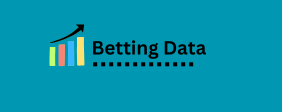I remember well the times when the praise of a baby carriage for barter in Nezalezhnostigram or the advertisement of a credit card of a large bank, which filled communities in social networks, did not cause such resistance, mental anguish and horror. Well, at least from advertisers and advertising agencies. Users were always divided into two camps: “ugh, advertising” and “I saw this on a blogger, I want it too.”
And then the autumn of 2022 came, and here it is. Advertising labeling . It seems that even then it was necessary to understand that this was only the beginning. But the advertising market believed that the regulatory authorities would be merciful, and the rules and requirements for labeling would be simple and adaptive.
It didn’t work out, I wasn’t lucky.
Fines for labeling advertising on the Internet: judicial practice
With the introduction of fines in 2023, it became phone number list somehow completely depressing. And the market began to study what advertising is in the eyes of the FAS, how and who should label, how not to go broke on this, in general, the eternal questions: “who is to blame?” and “what to do about it now?”
It is time for advertisers and agencies to decide who they are in life. Part of the market has gone into shadow marketing, part has consciously included the risks of fines in their budgets for placements, and part has remained on the bright side, having accepted the rules of the game.
And the basic rules are as follows:
— advertising distributed on the Internet must be registered in the Unified Register of Information Systems (ERIR);
— advertising material must contain a unique securing large accounts requires preparation advertising identifier and the mark “advertisement”;
— information about the timing and cost of placing advertising material, as well as data on the number of impressions, must be transferred to ERIR.
FAS regularly publishes explanations on its Telegram channel about what needs to be labeled and what does not. And the ERIR website contains instructions from Roskomnadzor that will help correctly integrate the token into advertising material and tell you how to submit reports in a particular case.
It is logical that the responsibility for the distribution of advertising lies with the advertising distributor. But many advertisers and agencies find it easier and calmer to label themselves. Some have burdened SMM specialists, project managers and marketers with this, some have lawyers, and some have hired separate specialists. But there are also advertising systems and exchanges that have automated both labeling and reporting.
Surprisingly, despite all this, by mid-2024, a considerable part of the advertising market was still in the tank. And the FAS and RKN, with diligence and not without the help of responsible Internet sanitation workers, continued to monitor, identify and fine.
How to Live with the Advertising Labeling Law in 2025
Now we are in early 2025. In addition to advertising labeling, a 3% fee has been added to the advertising budget, a register of 10,000-follower marketing list pages, and a complete ban on advertising in banned social networks is on the horizon. I still often come across posts in the spirit of “Whoever bought a pack of tickets will get a water pump” without the slightest hint of an identifier. Microbloggers still offer to transfer money for advertising to the card of a friend of the husband’s sister. Someone is still sure that by buying a database of email addresses, you can safely send out invitations to the opening of a retail outlet. And some saboteurs not only look for loopholes and excuses, but also call for sabotaging the requirements of the law.
